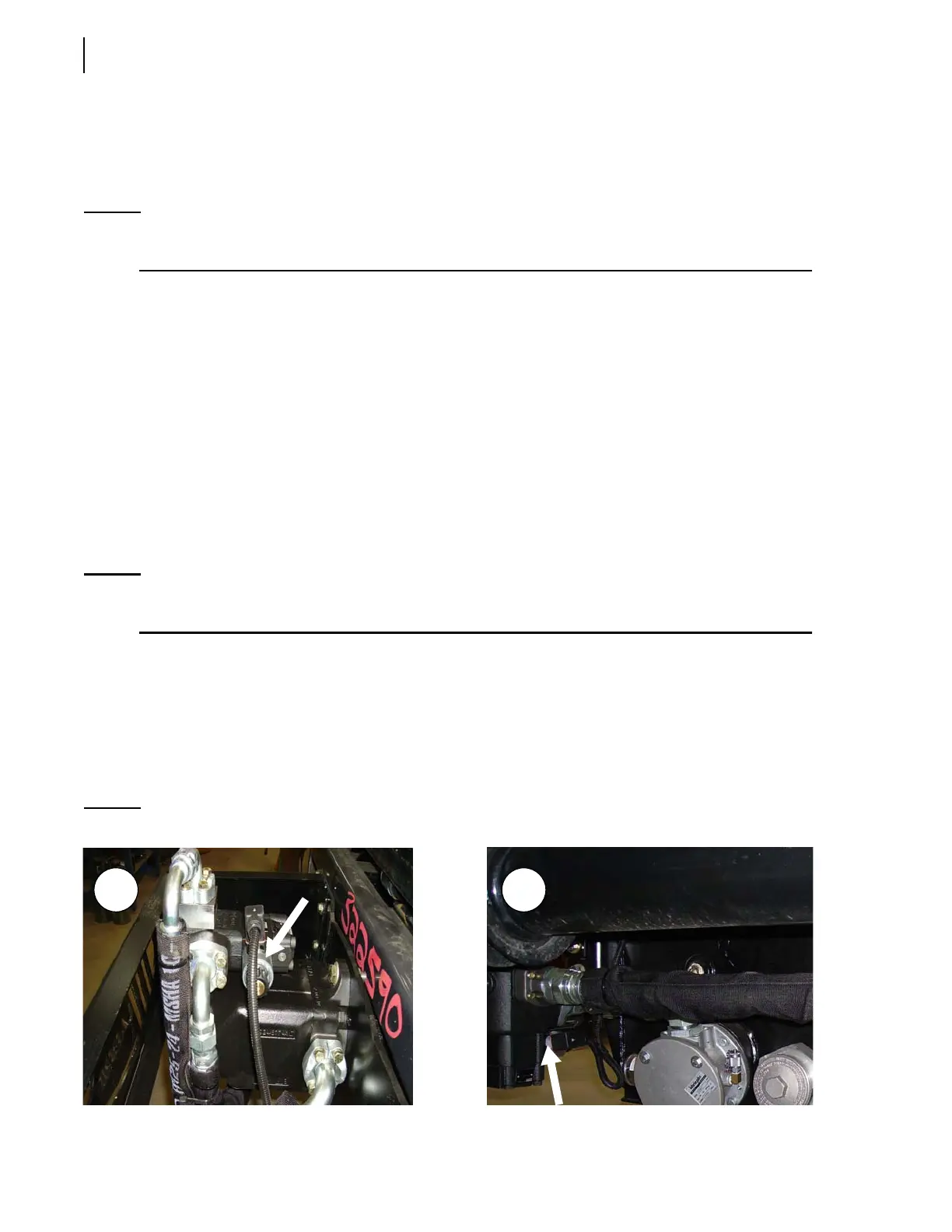118 Hydraulic System
Clean the strainer inside the hydraulic tank after the first 50 hours of use, and once a year
afterwards (see Cleaning the Strainer on page 153).
Hydraulic oil must be replaced at least once a year, or when contaminated (see Emptying the
Hydraulic Tank on page 152).
NOTE: The ball valve on the hydraulic tank must be completely open before engaging the pump or
starting the engine.
Labrie Enviroquip Group requires that the hydraulic fluid and return oil filter be changed and that the
strainer be cleaned before changing the hydraulic pump.
Manufacturer’s warranty on hydraulic pumps provided or sold by Labrie Enviroquip Group could be
declared void if the hydraulic fluid and return oil filter are not changed, and if the strainer is not
cleaned prior to replacing the hydraulic pump.
Therefore, it is mandatory to change the return oil filter and clean the strainer after the first 50 hours
of use and then once a year. The hydraulic fluid must be changed once a year. Hydraulic fluid
contamination will severely damage hydraulic components.
It is recommended to have the hydraulic fluid tested and analyzed by a lab to prevent hydraulic
system or pump breakdown. This will also optimize the frequency of hydraulic fluid changes. Labrie
vehicles are now equipped with an “oil sampler coupler.” For more information, see Testing Hydraulic
Oil on page 100.
NOTE: Evidence of maintenance and/or fluid samples could be requested when filing warranty claims
concerning the hydraulic system or pump.
Introducing the Dual Vane Pump
AUTOMIZER™ vehicles are equipped with a dual vane pump. Both sections of the dual vane pump are
activated by two electric solenoid valves. One is mounted on the pump and the other on the chassis
(see Figure 5-1). The electrical signal that activates the solenoid is sent by the pump switch on the
control panel.
Figure 5-1
Vane pump solenoid valve on the pump (1) and on the chassis (2)
1 2
